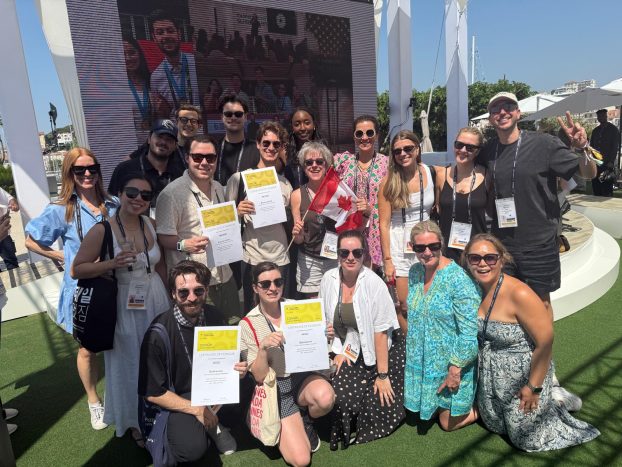Although government regulations have traditionally prevented pharmaceutical companies from advertising their prescription drug products directly to consumers, the explosive impact of the internet and rapidly escalating consumer demand for media and health information is powerfully influencing the pharmaceutical marketing landscape across Canada.
With exponential growth in the use of Direct To Consumer (DTC) campaigns over the past few years particularly in the USA, where, for example, Claritin spent more on paid advertising than Coca-Cola in 1999 many marketers now believe or hope that the Canadian regulations will soon be amended. Meanwhile, there is enough leeway within the regulations to allow marketers to launch influential non-product-specific information campaigns for the right product under the right conditions. And when it works, the effects can be dramatic.
Of the pharmaceutical advertising agencies participating in this
supplement MC Heathcare, Torre Lazur Canada, and Infinet Communications all three understand this emerging new reality
and are strongly positioned to educate their clients about its exciting potential.
MC Healthcare, a fast-growing Toronto-based agency founded in 1997, specializes in integrated pharmaceutical marketing programs, using everything from traditional journal ads, Direct-To-Physician Programs, multi-media Direct-To-Consumer programs, as well as Physician Advisory programs.
"Ask major pharmaceutical companies who their customers are, and some will say the doctor, some the pharmacist, some the government, some the consumer" says Mark Nolan, Account Director, Health Care Services. "The definition is shifting every day and that’s where the dissemination of DTC information can help consumers to self-identify their medical problems and visit their doctors earlier."
Nolan says his agency’s single greatest strength is its mix of traditional pharmaceutical marketing skills and a more mainstream consumer package goods skill set: "We recommend and use whatever media vehicles are most appropriate to build sales volume, always aiming to have a balanced, consistent marketing strategy for all parts of the channel."
A recent media campaign launched by the agency broke new ground for Hoffmann-La Roche with a two-pronged push/pull, consumer/physician strategy for its acne drug, Accutane. Following a highly successful, award-winning multi-media Direct-To-Consumer campaign in 1998-99 which reached a large number of moderate-to-severe acne sufferers, MC Healthcare initiated an extensive medical journal print campaign in February that will run to the end of the year.
The first time Hoffmann-La Roche has ever used medical journals to push Accutane, the ads adapted the consumer creative to maintain a consistent look and feel to link the two portions of the campaign. "Very few medical ads take a consumer approach while talking to physicians, so the ads will certainly stand out and register an impact" says Nolan.
To assist their clients in making tough decisions about whether or not to use DTC marketing, Torre Lazur Canada has created "DTC Launch Track", a proprietary model that brings together the agency’s fully integrated range of healthcare and consumer expertise. "We use a simple yet powerful combination of experience, expertise, media clout and integration to realize maximum return on investment for our clients" says president Anthony Phelips. "But DTC advertising is by no means a forgone conclusion when considering how best to grow your brand. There are many inter-locking issues at play, so you must look
before leap."
For example, Phelips says marketers must assess whether the patient’s or consumer’s health issue is important enough for him or her to talk to their doctor. Are their certain aspects of the product that would allow you to cue the patient to the product? What response are you hoping for from the physician? What will be the impact of your DTC campaign on the medical community’s opinion of your drug and your company?
Included in the agency’s arsenal of marketing tools is PromoPulse.com, an effective way of determining whether DTC is making financial sense, measures ROI, and re-allocates advertising and marketing spending
as needed.
At Infinet Communications, a Toronto agency started in 1995 by physician-turned marketer Dr. John Reeves, a smart blend of medical and
e-Health internet expertise is pushing eHealth marketing to new levels of sophistication. The agency first made headlines in 1996 with the launch of Sympatico’s HealthWay, Canada’s first healthcare information portal. More recently, Infinet has forged the on-line launch of Viagra and will soon break the internet portion of the Canadian Celebrex campaign two of the most successful pharmaceutical brands in recent history.
"The age-old relationship between physician and patient is being fundamentally re-shaped by the internet" says Dr. Reeves. "As physicians cease to be the sole gatekeepers of medical information, the web presents pharmaceutical companies with a golden opportunity to become key players in the healthcare industry as providers of value-added content and applications to consumers."
Because recent studies show the general Canadian population to be among world leaders in internet use and because Canadians are increasingly turning to the net for health care information Infinet has positioned itself as one of the first agencies anywhere to capitalize on this paradigm-shifting media phenomenon, leveraging local and global branding techniques through its customized websites.
"E-Health marketing has proven it can create enduring, permission-based relationships between patients and healthcare brands by evolving an ongoing dialogue with individual customers" says Reeves. "Whether it’s through interactive patient compliance tools, on-line CME programs or electronic newsletters, we can establish the client’s site as the credible destination for healthcare information within any given therapeutic area."
Also in this sponsored supplement:
– Building e-health brands: Infinet has helped more than 40 healthcare clients migrate their strategies online




























